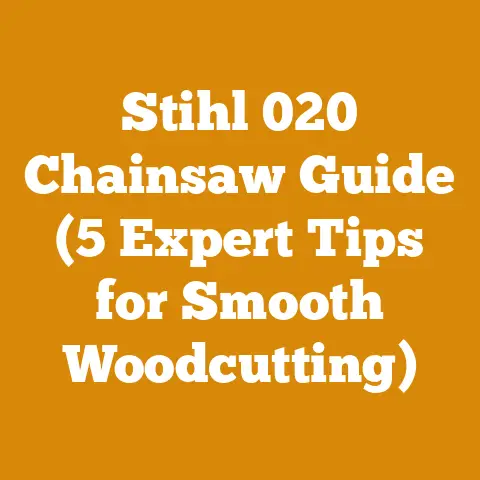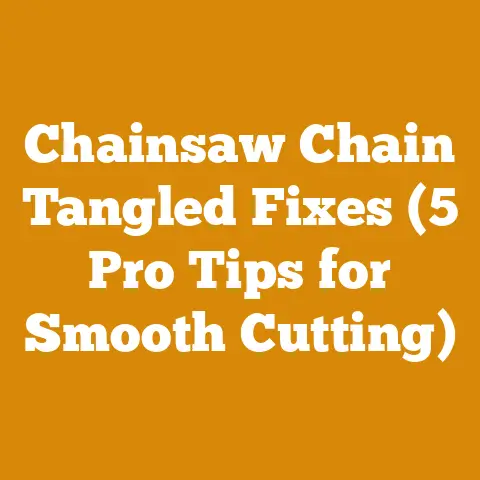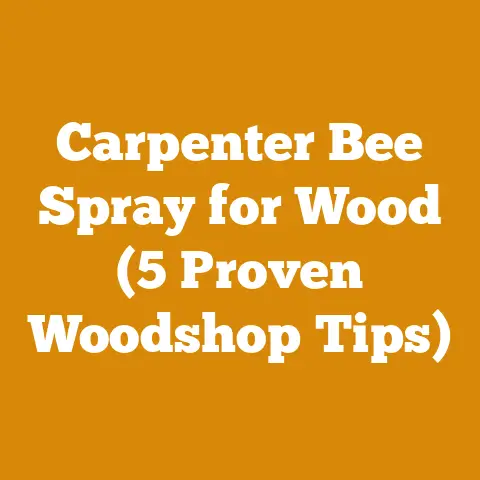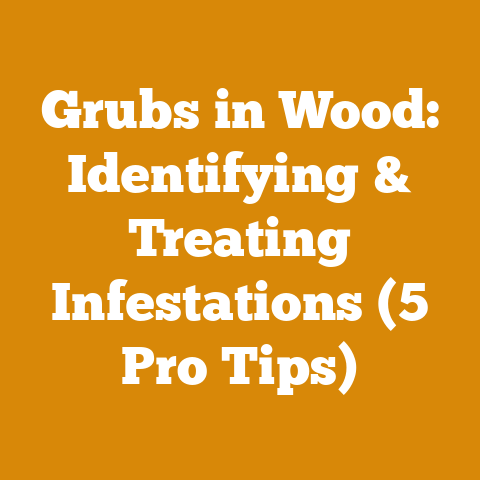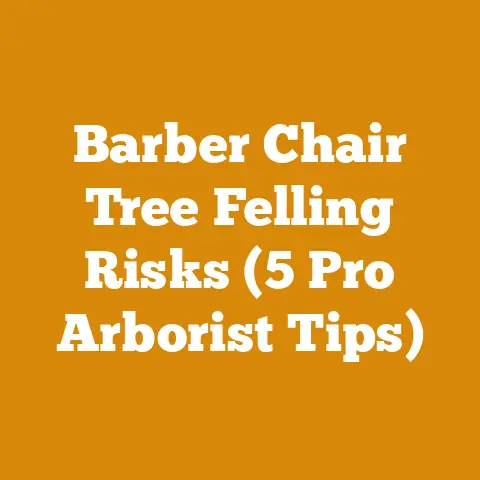Backyard Japanese Garden Shed Woodworking (5 Must-Know Joinery Tips)
Building a Japanese garden shed in your backyard might seem like a tranquil escape, a miniature temple to craftsmanship and serenity. But before you can sip tea in your new haven, you need to grapple with the realities of wood, joinery, and, most importantly, the cost. Trust me, I’ve been there. I remember the first time I tried to build a simple birdhouse – I underestimated the cost of wood by a mile! That’s why I’m here to guide you through the financial thicket of this project, offering insights and actionable tips to keep your budget on track. We will explore the cost implications of each joinery technique, wood selection, and finishing to help you craft a budget as serene as the garden shed itself.
Backyard Japanese Garden Shed Woodworking: A Cost-Conscious Guide
This article will delve into the financial side of building a Japanese garden shed, with a special focus on the “5 Must-Know Joinery Tips” and how they impact your budget. We’ll break down the costs, explore ways to save money, and ensure your dream shed doesn’t turn into a financial nightmare.
Understanding the Variable Costs
Before we dive into specifics, it’s crucial to acknowledge the factors that will significantly influence your project’s cost. These variables can make or break your budget, so let’s get them out in the open:
- Wood Species: The type of wood you choose is the most significant cost driver. Cedar, known for its rot resistance and beauty, will be pricier than pressure-treated pine. We’ll explore wood options and their cost implications in detail later.
- Shed Size and Complexity: A larger shed, or one with intricate details, will naturally require more materials and labor (if you’re not doing it all yourself).
- Joinery Techniques: Some joinery methods, like mortise and tenon, are more labor-intensive and require specialized tools, impacting the overall cost.
- Foundation: The type of foundation you choose (concrete slab, gravel base, or pier foundation) will significantly impact the budget.
- Location and Accessibility: The cost of materials and labor can vary drastically depending on your location. Difficult access to your backyard can also increase delivery charges.
- Permits: Don’t forget to factor in the cost of building permits, which vary by municipality.
- Finishing: Stains, sealants, and other finishing products add to the overall expense.
- Tools: If you don’t already own the necessary tools, you’ll need to factor in the cost of purchasing or renting them.
Breaking Down the Cost Components
Let’s dissect the project into its key cost components to gain a clearer understanding of where your money will be going.
1. Timber Purchase or Harvesting Costs
This is where the bulk of your budget will likely be spent. The type of wood you choose, its quality, and the quantity required will all play a significant role.
-
Wood Species and Cost:
- Cedar: A popular choice for its natural beauty, rot resistance, and insect repellent properties. Expect to pay significantly more for cedar than for pine or fir. According to recent data, cedar can range from \$8 to \$15 per board foot, depending on the grade and species (e.g., Western Red Cedar, Alaskan Yellow Cedar).
- Cypress: Another excellent choice for outdoor projects due to its natural decay resistance. Cypress is generally less expensive than cedar, ranging from \$6 to \$12 per board foot.
- Pine: A more affordable option, especially pressure-treated pine. However, it lacks the natural beauty and longevity of cedar or cypress. Pressure-treated pine typically costs between \$3 and \$6 per board foot.
- Fir: Another cost-effective option, often used for framing and structural elements. Fir is generally priced similarly to pine, between \$3 and \$6 per board foot.
- Exotic Hardwoods (Mahogany, Teak): While visually stunning, these woods are incredibly expensive and may not be practical for a garden shed unless you’re aiming for a very high-end result. Prices can range from \$20 to \$50+ per board foot.
-
Calculating Wood Quantity:
- To accurately estimate the amount of wood needed, create a detailed plan for your shed, including dimensions and a cut list. This list will specify the length, width, and thickness of each piece of wood required.
- Remember to factor in waste. It’s always a good idea to add 10-15% to your wood order to account for mistakes, knots, and other imperfections.
- Formula for Board Feet: (Thickness in inches x Width in inches x Length in inches) / 144
- Example: A board that is 1 inch thick, 6 inches wide, and 8 feet (96 inches) long contains (1 x 6 x 96) / 144 = 4 board feet.
- Online calculators can be helpful for converting your measurements into board feet.
-
Timber Harvesting (If Applicable):
- If you plan to harvest your own timber, you’ll need to factor in the cost of permits, equipment rental (chainsaw, logging tools), and labor (your time or hired help).
- Chainsaw Rental: A professional-grade chainsaw rental can cost between \$50 and \$100 per day.
- Logging Tools: Axes, wedges, and other logging tools can cost between \$50 and \$200, depending on the quality and brand.
- Permits: Harvesting timber on private land may require permits, which can range from \$50 to \$500 depending on your location and the amount of timber harvested.
- Important Note: Harvesting your own timber is a labor-intensive process and requires specialized knowledge and skills. It’s crucial to prioritize safety and follow all local regulations.
2. Joinery Costs: Tools, Materials, and Time
The joinery techniques you choose will significantly impact both the aesthetics and the cost of your shed.
-
The “5 Must-Know Joinery Tips” and Their Cost Implications:
- Mortise and Tenon: A strong and traditional joint, ideal for structural elements. However, it requires precise cutting and specialized tools like chisels, mortise machines, or routers.
- Tool Costs: A good set of chisels can cost between \$50 and \$200. Mortise machines can range from \$500 to \$2000+. Routers with mortising jigs are a more affordable option, costing between \$200 and \$500.
- Time: Mortise and tenon joints are time-consuming to cut by hand, which can impact labor costs if you’re hiring someone.
- Dovetail Joints: Known for their strength and visual appeal, dovetail joints are often used for drawers and decorative elements. They require precise cutting and specialized tools like dovetail saws, chisels, and dovetail jigs.
- Tool Costs: Dovetail saws can cost between \$50 and \$150. Dovetail jigs can range from \$50 to \$300, depending on the complexity and brand.
- Time: Dovetail joints are also time-consuming to cut, especially by hand.
- Lap Joints: A simple and strong joint, often used for framing and structural elements. Lap joints are relatively easy to cut and require basic tools like saws and chisels.
- Tool Costs: Minimal. Saws and chisels are typically already owned by most woodworkers.
- Time: Lap joints are relatively quick to cut.
- Butt Joints: The simplest type of joint, where two pieces of wood are simply butted together and fastened with screws or nails. Butt joints are the least strong and aesthetically pleasing, but they are the quickest and easiest to create.
- Tool Costs: Minimal. Screws or nails are relatively inexpensive.
- Time: Butt joints are the quickest to assemble.
- Dado Joints: A joint where one piece of wood fits into a groove cut into another piece of wood. Dado joints are often used for shelves and panels. They require a router or table saw with a dado blade.
- Tool Costs: A router with a dado blade can cost between \$100 and \$300. A table saw with a dado blade can range from \$300 to \$1000+.
- Time: Dado joints are relatively quick to cut with the right tools.
- Mortise and Tenon: A strong and traditional joint, ideal for structural elements. However, it requires precise cutting and specialized tools like chisels, mortise machines, or routers.
-
Fasteners:
- Screws, nails, and glue are essential for securing your joints. Choose high-quality fasteners designed for outdoor use to prevent rust and corrosion.
- Cost: Screws and nails typically cost between \$10 and \$30 per box, depending on the size and type. Wood glue can cost between \$5 and \$20 per bottle.
3. Foundation Costs
The foundation provides a stable base for your shed and protects it from moisture and ground movement.
- Foundation Options and Costs:
- Concrete Slab: The most durable and expensive option. It requires excavation, formwork, and concrete pouring.
- Cost: A concrete slab can cost between \$5 and \$10 per square foot, including materials and labor. For a 10×12 shed, this translates to \$600 to \$1200.
- Gravel Base: A more affordable option, suitable for smaller sheds. It requires excavation, gravel compaction, and a level surface.
- Cost: A gravel base can cost between \$2 and \$5 per square foot, including materials and labor. For a 10×12 shed, this translates to \$240 to \$600.
- Pier Foundation: A cost-effective option for sheds built on uneven ground. It involves setting concrete piers into the ground and building a wooden frame on top.
- Cost: A pier foundation can cost between \$3 and \$7 per square foot, including materials and labor. For a 10×12 shed, this translates to \$360 to \$840.
- Concrete Slab: The most durable and expensive option. It requires excavation, formwork, and concrete pouring.
4. Roofing Costs
The roof protects your shed from the elements and adds to its aesthetic appeal.
- Roofing Options and Costs:
- Asphalt Shingles: The most common and affordable roofing material.
- Cost: Asphalt shingles typically cost between \$1 and \$3 per square foot, including materials and labor.
- Wood Shingles: A more expensive option that adds a rustic charm to your shed.
- Cost: Wood shingles can cost between \$4 and \$8 per square foot, including materials and labor.
- Metal Roofing: A durable and long-lasting option, but can be more expensive than asphalt shingles.
- Cost: Metal roofing can cost between \$5 and \$10 per square foot, including materials and labor.
- Cedar Shakes: The most expensive option, but offers superior durability and a beautiful aesthetic.
- Cost: Cedar shakes can cost between \$8 and \$15 per square foot, including materials and labor.
- Asphalt Shingles: The most common and affordable roofing material.
5. Finishing Costs
Finishing products protect your shed from the elements and enhance its appearance.
- Finishing Options and Costs:
- Stain: A popular choice for cedar and other wood species. Stain enhances the natural grain of the wood and provides some protection from the elements.
- Cost: Stain typically costs between \$20 and \$50 per gallon, depending on the brand and type.
- Sealant: A clear coating that protects the wood from moisture and UV damage.
- Cost: Sealant typically costs between \$20 and \$50 per gallon, depending on the brand and type.
- Paint: A more opaque option that provides maximum protection from the elements.
- Cost: Paint typically costs between \$30 and \$70 per gallon, depending on the brand and type.
- Stain: A popular choice for cedar and other wood species. Stain enhances the natural grain of the wood and provides some protection from the elements.
6. Labor Costs
If you’re not doing all the work yourself, you’ll need to factor in labor costs.
-
Hiring a Contractor:
- The cost of hiring a contractor can vary significantly depending on your location, the contractor’s experience, and the complexity of the project.
- Average Hourly Rate: General contractors typically charge between \$50 and \$100 per hour.
- Project-Based Pricing: Some contractors may offer project-based pricing, which can be more predictable than hourly rates.
- Get Multiple Quotes: It’s always a good idea to get multiple quotes from different contractors before making a decision.
-
DIY Labor:
- Even if you’re doing the work yourself, it’s important to factor in the value of your time.
- Opportunity Cost: Consider what you could be earning if you were working instead of building your shed.
- Time Commitment: Building a shed can take a significant amount of time, especially if you’re new to woodworking.
7. Permits and Fees
Don’t forget to factor in the cost of building permits, which are required in most municipalities.
- Permit Costs:
- Permit costs vary depending on your location and the size of your shed.
- Average Permit Cost: Expect to pay between \$50 and \$500 for a building permit.
- Check with Your Local Building Department: Contact your local building department to determine the specific permit requirements and fees for your project.
8. Tool Costs
If you don’t already own the necessary tools, you’ll need to factor in the cost of purchasing or renting them.
-
Essential Tools:
- Saw: Circular saw, miter saw, or hand saw.
- Drill: Cordless drill or corded drill.
- Level: Spirit level or laser level.
- Measuring Tape: Retractable measuring tape.
- Hammer: Claw hammer or framing hammer.
- Chisels: Wood chisels for mortise and tenon joints.
- Router: For dado joints and other decorative cuts.
-
Tool Costs:
- Purchasing Tools: The cost of purchasing tools can range from a few hundred dollars to several thousand dollars, depending on the quality and brand.
- Renting Tools: Renting tools can be a more affordable option if you only need them for a short period.
- Borrowing Tools: Consider borrowing tools from friends or family members.
Case Study: Budgeting for a 10×12 Japanese Garden Shed
Let’s put all of this information together and create a sample budget for a 10×12 Japanese garden shed. This budget assumes that you’re using cedar lumber, building a gravel base foundation, and doing most of the work yourself.
| Cost Component | Estimated Cost | Notes |
|---|---|---|
| Timber (Cedar) | \$2,500 – \$4,500 | Assumes \$10 – \$15 per board foot. Includes framing, siding, and trim. |
| Foundation (Gravel) | \$240 – \$600 | Includes gravel, landscape fabric, and compaction. |
| Roofing (Asphalt) | \$360 – \$720 | Includes shingles, underlayment, and fasteners. |
| Finishing (Stain) | \$50 – \$150 | Includes stain, brushes, and rags. |
| Fasteners | \$50 – \$100 | Screws, nails, and glue. |
| Permits | \$100 – \$300 | Varies by location. |
| Tools (Rental) | \$100 – \$300 | Assumes you need to rent a few specialized tools like a router or mortise machine. |
| Contingency (10%) | \$340 – \$667 | For unexpected expenses. |
| Total Estimated Cost | \$3,740 – \$7,337 | This is a rough estimate. The actual cost may vary depending on your specific circumstances. |
Important Considerations:
- This is just an estimate. The actual cost may vary depending on your specific design, material choices, and location.
- Shop around for the best prices. Compare prices from different lumber yards, hardware stores, and roofing suppliers.
- Consider using reclaimed materials. Reclaimed lumber can be a more affordable and environmentally friendly option.
- Prioritize quality over cost. While it’s important to stay within your budget, don’t sacrifice quality for the sake of saving a few dollars. Using high-quality materials will ensure that your shed lasts for many years to come.
- Be prepared to adjust your budget. Unexpected expenses are inevitable. It’s always a good idea to have a contingency fund to cover these costs.
Tips for Cost Optimization and Budget Management
Building a Japanese garden shed can be a rewarding experience, but it’s essential to manage your budget effectively to avoid overspending. Here are some practical tips for cost optimization:
- Plan Carefully: A detailed plan is your best friend. The more detailed your plan, the more accurate your cost estimate will be.
- Shop Around: Don’t settle for the first price you see. Compare prices from different suppliers to find the best deals.
- Consider Alternative Materials: Explore less expensive wood options like pine or fir, or consider using reclaimed materials.
- Simplify the Design: A simpler design will require less material and labor.
- Do it Yourself (Where Possible): The more work you do yourself, the more money you’ll save on labor costs.
- Rent or Borrow Tools: Avoid purchasing expensive tools that you’ll only use once.
- Buy in Bulk: Buying materials in bulk can often save you money.
- Negotiate Prices: Don’t be afraid to negotiate prices with suppliers and contractors.
- Look for Sales and Discounts: Keep an eye out for sales and discounts on building materials.
- Be Flexible: Be prepared to adjust your design or material choices if necessary to stay within your budget.
The Zen of Budgeting: Finding Peace in the Process
Building a Japanese garden shed is more than just a construction project; it’s an opportunity to connect with nature, exercise your creativity, and create a tranquil space for relaxation. While the cost can be a significant factor, remember that the value of the finished product extends far beyond the monetary investment.
By carefully planning your project, exploring cost-saving options, and managing your budget effectively, you can create a beautiful and functional garden shed that will bring you joy for years to come. So, take a deep breath, embrace the challenge, and enjoy the process of building your own little piece of Zen in your backyard.
Actionable Takeaways and Next Steps
Ready to embark on your Japanese garden shed project? Here are some actionable takeaways and next steps:

